The 2F.1 “Sea Camel” – the first carrier strike aircraft
Ever since the fall of 1914,Zeppelins had been used by the German Navy for reconnaissance over the strategic North Sea, and had participated in both Dogger Bank and Jutland, the major naval surface actions of the war in that region. Throughout this period, the Royal Naval Air Service made a number of attempts to destroy these Zeppelin bases, mounting the first long‑range bombing mission in history with Avro 504s against the Zeppelin works itself in 1915. The RNAS was forced to operate at maximum range and limited numbers, so that real success always eluded them. In 1917, fighter aircraft first went to sea when Sopwith Pups and Camels were flown off barges towed at high speed behind destroyers, to provide interception capability when Zeppelins were spotted; several of the aerial giants were destroyed this way in 1917‑18.
Everything changed in 1918 with the modifications to the navy's first aircraft carrier, HMS "Furious", providing for a complete flight deck ‑ rather than the previous landing‑on and taking‑off decks ‑ and an elevator which allowed the fragile aircraft to be stowed below in the hangar deck. Now suitable aircraft could be taken to sea and take off armed with a worthwhile load. The target was to be the Zeppelin sheds at Tønder, which was the major thorn in the Royal Navy's side. Tønder, the biggest naval Zeppelin base, comprised three hangars. The largest, "TOSKA," was 730ft long, 220 ft. high and 130 ft wide; it could house two of the biggest Zeppelins.
Operation F7, the successful raid on July 19, 1918, was actually the third to have been attempted. Operation F5 in early June was abandoned after "Furious" had left port, due to the possibility of having been spotted by U‑boats. The strike would have to enter coastal waters to give the aircraft sufficient range, and would be highly vulnerable to interception by the High Seas Fleet if sufficient notice were given. Operation F6 in late June was abandoned due to bad weather. Operation F7 left Rosyth dockyard in Scotland on July 17, 1918. "Furious" was escorted by five cruisers: HMS "Caledon," "Galatea," "Royalist," "Phaeton" and "Inconstant." A squadron of battleships from the Grand Fleet operated in support: HMS "Revenge," "Royal Sovereign," "Ramillies," "Royal Oak" and "Resolution" with four cruisers and other destroyers in case the High Seas Fleet put in an appearance.
Aboard "Furious" were seven Sopwith 2F.1 Camels. Capt. Jackson, Capt. Dickson and Lt. Williams were the first strike, followed by a second strike by Capt Smart, Capt. Thynne, Lt. Dawson and Lt. Yeulett. This was a maximum‑performance operation. The Camels would be operating at maximum range, with each aircraft carrying four 50‑lb bombs. There was not enough fuel for the planes to join up in formation once launched from the carrier. The plan was that they would return to the fleet, to ditch near a destroyer for pickup. Alternatively, if they could not reach the fleet or the fleet was forced to retire, they were to land in neutral Denmark.
First light came at 0300, July 19, 1918, with "Furious" 90 miles off the North German coast. The first strike climbed to 5,000 ft, heading south down the coast of Denmark until turning east and climbing to 6000 ft to approach Tønder, which was right on the Danish-German border. Dickson attacked what he thought was the main shed while the other two aircraft actually attacked "TOSKA." Dickson dropped his first bomb from 700ft, hitting what he thought was the target, though it was later determined he actually bombed the nearby town. Jackson and Williams set Zeppelins L‑54 and L‑60 afire in the hangar; flames and smoke rose to over 1,000ft. Dickson was the only one to make it back to the fleet, locating the inshore destroyer off Lyndvig Lighthouse at 0545; he ditched nearby and was picked up by HMS "Violent." Jackson arrived at the prearranged rendezvous at 0455 but had engine trouble; he managed to restart and climb, but became lost above the clouds. He ran out of fuel and crashed in Denmark, where he burned the airplane and then was taken to the local English Consul by a farmer. Williams force landed near Esjberg, but was unable to destroy his aircraft due to the arrival of the local police. The second strike departed "Furious" at 0322, but only three reached Tønder. Capt. Thynne suffered engine trouble and was forced to return to the fleet; he was successfully picked up, though the rescuing destroyer ran over his aircraft and destroyed it. The last three arrived over the target at 0445, when they were subject to some anti‑aircraft fire. They struck TONI and TOBIAS, releasing their bombs from 800 ft, though they were not able to observe the results. Capt. Smart successfully rejoined the fleet by 0630. Lt. Dawson was also forced to land in Denmark, where he joined Jackson and Williams in Esjberg. Lt. Yeulett, having departed on his own, was never seen again. His body washed up on a beach in Ringkøbing Fjord on July 30; it is presumed he ran out of fuel, was forced to ditch in the fjord and drowned. He was buried in Havrvig Churchyard. After some considerable adventures which involved an escape from internment camp in Aarhus, a clandestine trip to Copenhagen, and a voyage across the Skaggerak during which they were nearly intercepted by a German trawler, Dawson, Jackson and Williams got to Sweden and were taken to Norway, where they took a steamer to England, arriving back at Rosyth on August 25, 1918 to rejoin "Furious."
The attack on the Tønder Zeppelin base ‑ the first carrier air strike in history ‑ effectively ended use of the base by the Germans for the remainder of the war, a considerable strategic victory for the Royal Navy.
This is the Eduard Profipack Camel kit, which includes the extra fuselage to do a "Sea Camel", which could be separated aft of the wing for storage aboard ship, which is why the tail control wires are all external. Kit decals were used.
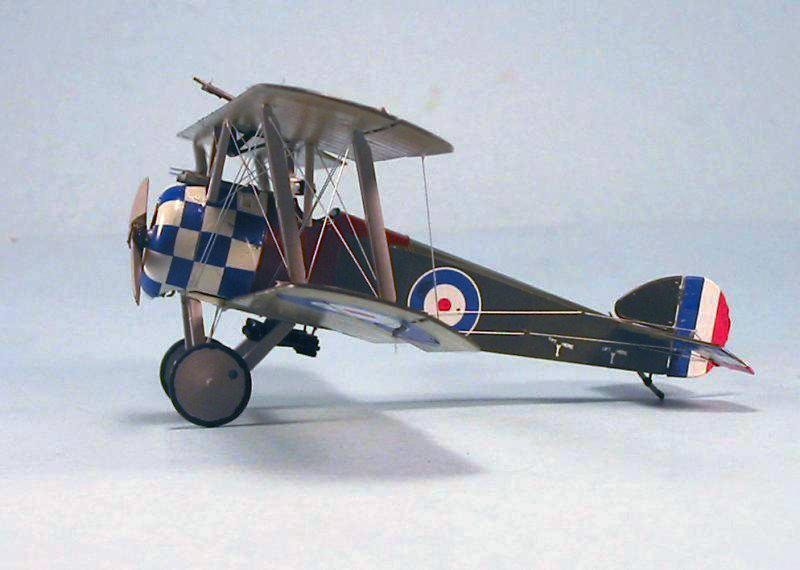
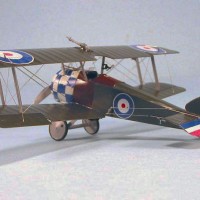
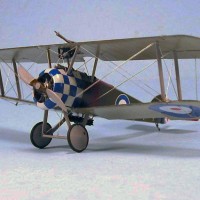
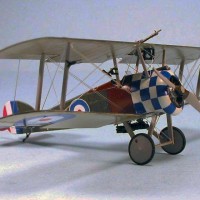



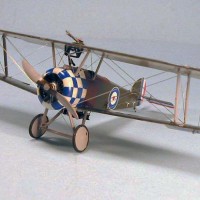

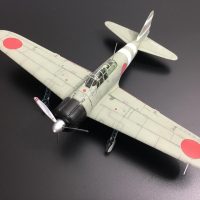
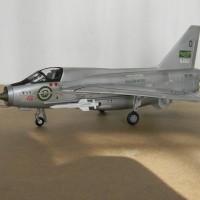
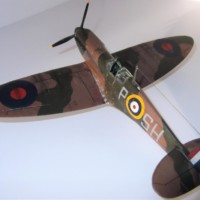
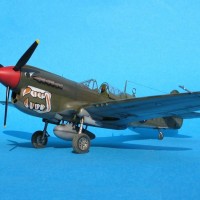
Tom... Nice model and thanks for sharing the history, always a plus with your work.